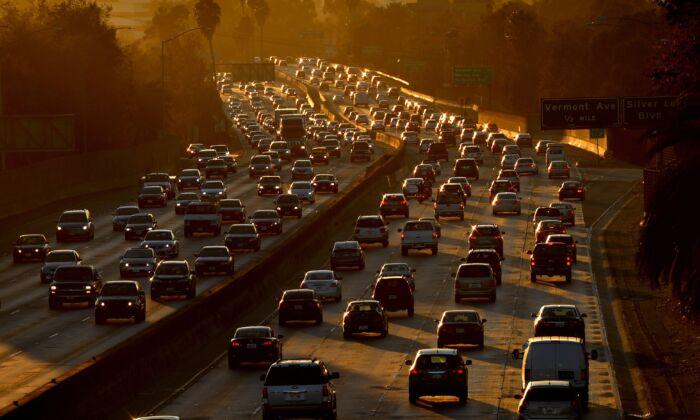Travelers hitting the roads home following the Christmas holiday can expect to see gas prices lower than this time last year, but they will be driving on seemingly more dangerous roads.
The national average for a gallon of regular gas on Dec. 26 stood at $3.10 per gallon in the United States according to AAA. That is slightly below the national average from a week ago, which was $3.14 per gallon, and a solid downward trend from a month ago when the cost of a gallon of regular gas was $3.56.
One year ago today the average was $3.29 a gallon.
In a recent interview about holiday travel, Northwestern University’s Professor Ian Savage told the Chicago Daily Herald that gasoline prices are likely to continue to drop, possibly even back to what prices were in 2019 and early 2020.
“Gasoline prices should continue to fall back to pre-pandemic levels as the global economy slows down, Savage said. “However, there is uncertainty if the situation in Ukraine deteriorates further.”
Savage, who is also Northwestern’s Transportation and Logistics Program director, warned that there is also troubling data coming from traffic and travel studies.
“Fatality rates per mile driven are going up for the first time in decades,” Savage said. “This is despite all the advanced safety features now common on new cars.
“Pedestrians and cyclists are particularly victimized. It defies conventional explanations,” he said.
“Are road users so distracted from their tasks and driving more aggressively? While I would like to predict the opposite, I suspect that there is no political or public appetite to do anything about this growing public health problem.”
DePaul University Professor Joseph Schwieterman said that the cheaper fuel will naturally mean more travelers on the road, which could help account for 2022 already seeing a 15-year high in auto deaths as of the summer of this year.
That statistic could be contributing to the upward trajectory of vehicle insurance rates, which have seen an uptick, possibly likely due to pandemic-related trends.
A mid-December report indicated that AAA believed flexible hybrid work schedules would cause more Christmas travel in 2022 than in previous years.
The club expected more than 112 million Americans to travel at least 50 miles between Dec. 23 and Jan. 2, which is an increase of about 3.6 million over the same time period last year.
If those predictions turn out to be correct, 2022 will be the third-busiest travel year since AAA started reporting on holiday travel in 2000.
Regina Ali, AAA Mid-Atlantic spokeswoman for Maryland and Washington, said in a statement about the 2022 travel season, “This year, travel time will be extended due to Christmas Day and New Year’s Day falling on Sundays. With hybrid work schedules, we are seeing more people take long weekends to travel because they can work remotely at their destination and be more flexible with the days they depart and return.”
However, as American employees go back to group working environments, return-to-office occupancy rates are still increasing, according to Fortune. Office occupancy rates hit 49 percent during the first full week in December, which was the highest it’s been since the start of the pandemic in March 2020.
Experts believe that the number of in-office workers will continue to rise going into 2023 with Kastle Systems Chairman Mark Ein saying the occupancy rates have been moving in “fits and starts.” Kastle went on to say that “[office occupancy] has been on a steady rise since the beginning of [2022]. We’ve actually been talking about and predicting this rise for a while.”
Workers going to their offices dropped to a low of 15 percent in April of 2020 and began a steady increase in 2021. Ein said he expects occupancy rates to hit a plateau at around 60 percent, causing there to be less work-related commuting in 2023 than rates seen in 2019 and earlier years.
Holiday travel is also climbing back toward pre-pandemic levels with AAA predicting that 7.2 million Americans will fly this winter, an increase of 14 percent over last year in air travel. In 2019, 7.3 million people flew during the last holiday before the pandemic.
During this festive season, which runs through Jan. 2, the club predicts that 3.6 million people will travel by bus, rail, and cruise ship. That represents 94 percent of 2019’s volume and a 23 percent increase over the previous year.





